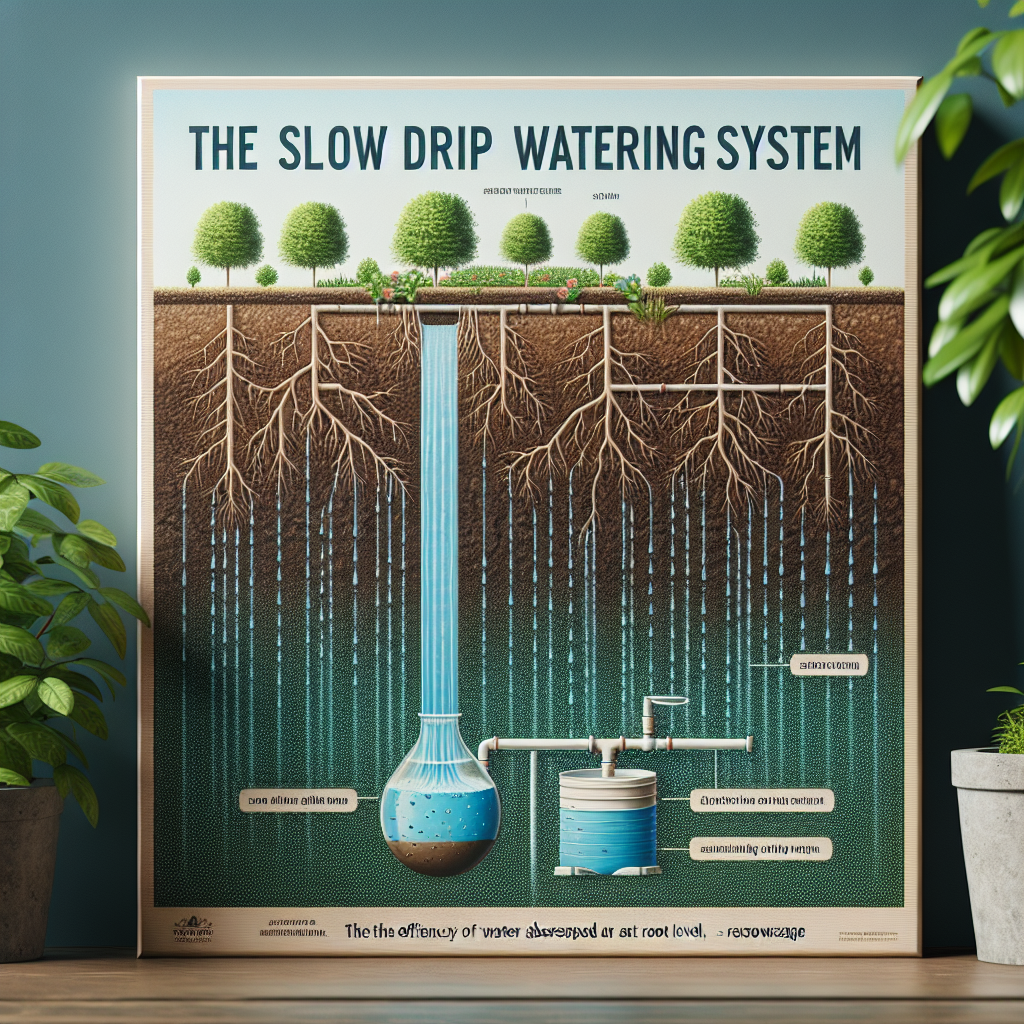Watering plants efficiently is crucial for maintaining a healthy garden. One of the most effective methods of watering plants is through the use of slow drip watering systems. These systems deliver water directly to the roots of plants at a slow and steady rate, resulting in minimal water waste and maximum efficiency.
The science behind slow drip watering systems lies in their ability to mimic natural conditions that allow plants to thrive. By delivering water directly to the roots, these systems ensure that plants receive the precise amount of moisture they need without any excess runoff or evaporation. This not only saves water but also helps prevent issues such as overwatering, which can lead to root rot and other problems.
One of the key advantages of slow drip watering systems is their ability to provide consistent moisture levels to plants, which is essential for healthy growth. When plants are watered too quickly or inconsistently, they may suffer from stress and wilt, ultimately impacting their overall health and productivity. Slow drip watering ensures that plants receive a steady supply of water over an extended period, allowing them to absorb nutrients more effectively and grow vigorously.
Furthermore, slow drip watering systems help conserve water by reducing evaporation and runoff. When water is applied slowly and at a low flow rate, it has more time to soak into the soil and reach plant roots before it can evaporate or run off into surrounding areas. This not only saves water but also helps reduce overall water usage in the garden.
Another benefit of slow drip watering systems is their ability to provide targeted irrigation, delivering water precisely where it’s needed most – at the root zone. This ensures that plants receive sufficient moisture without wasting water on areas where it’s not needed, such as pathways or driveways. By focusing irrigation on plant roots, slow drip systems help promote deeper root growth and stronger plants overall.
In addition to promoting plant health and conserving water, slow drip watering systems can also help reduce weed growth and minimize soil erosion. By delivering water directly to plant roots, these systems deprive weeds of the moisture they need to thrive, making it easier to control weed populations in the garden. Additionally, by applying water slowly and evenly, slow drip systems help prevent soil compaction and maintain soil structure over time.
When designing a slow drip watering system for your garden, it’s important to consider factors such as plant type, soil type, climate conditions, and garden layout. Different types of plants have varying water requirements, so it’s important to tailor your watering system accordingly. For example, vegetables may require more frequent watering than drought-tolerant perennials.
Soil type also plays a crucial role in determining how often you should irrigate your garden. Sandy soils drain quickly and may require more frequent watering than clay soils with higher moisture retention capabilities. Understanding your soil type will help you determine how long you should run your slow drip system each time you irrigate.
Climate conditions are another factor to consider when designing a slow drip system for your garden. In hot and dry climates, you may need to increase irrigation frequency during periods of drought or high temperatures. Conversely, in cooler climates with higher rainfall levels, you may be able to reduce irrigation frequency during wetter months.
Finally, consider your garden layout when planning a slow drip watering system. Make sure that all areas of your garden receive adequate coverage from your irrigation system by strategically placing emitters or hoses throughout the space. Pay special attention to areas with dense planting or containers that may require additional irrigation compared to open beds or lawns.
In conclusion…
Slow-drip watering systems offer numerous benefits for gardens large and small by providing efficient irrigation directly at the root level while conserving valuable resources like water.
Maximizing efficiency while minimizing waste makes these systems an ideal choice for sustainable gardening practices that promote healthy plant growth without overspending on resources – both environmental as well as financial!













